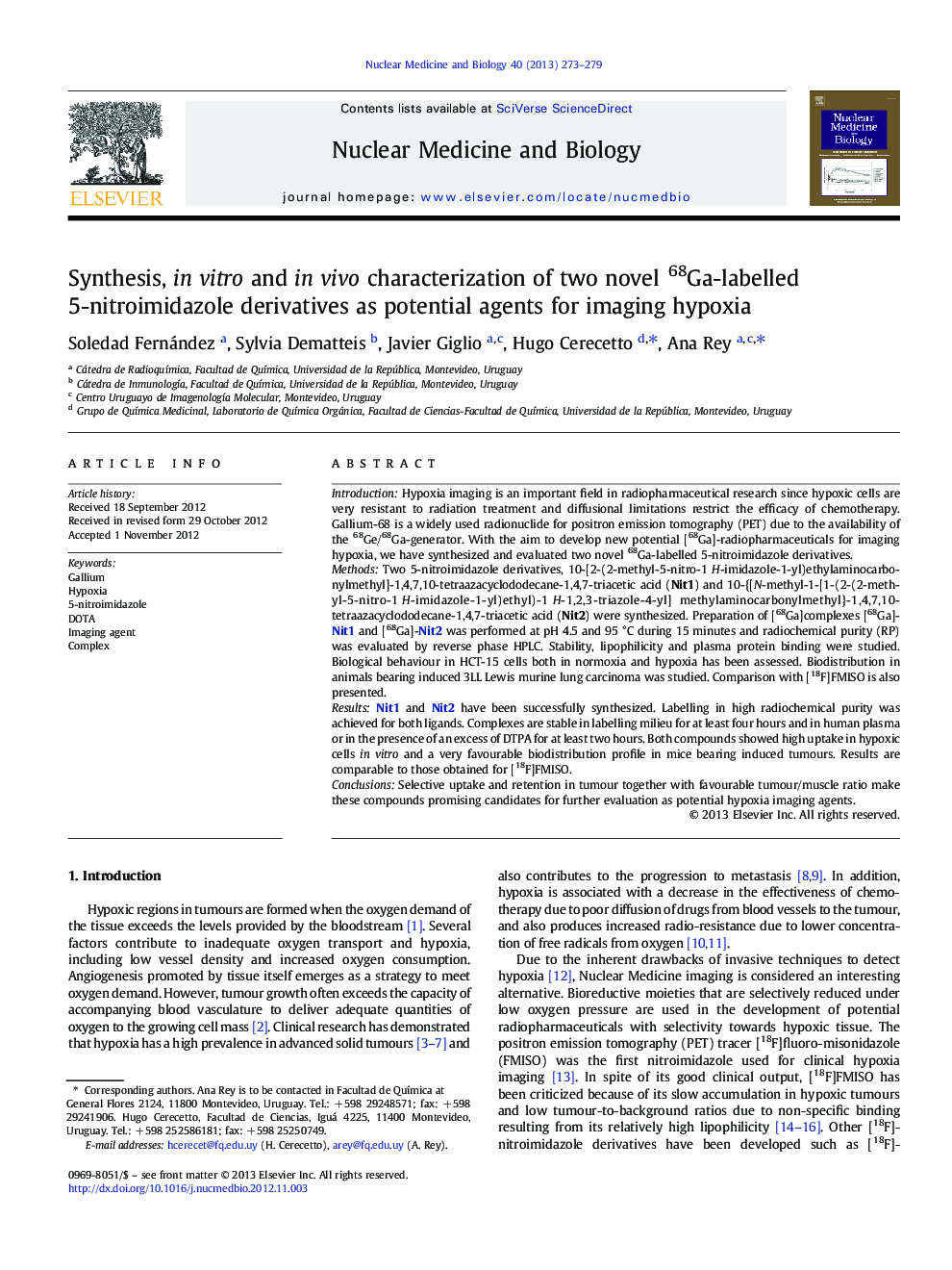| Article ID | Journal | Published Year | Pages | File Type |
|---|---|---|---|---|
| 2153703 | Nuclear Medicine and Biology | 2013 | 7 Pages |
IntroductionHypoxia imaging is an important field in radiopharmaceutical research since hypoxic cells are very resistant to radiation treatment and diffusional limitations restrict the efficacy of chemotherapy. Gallium-68 is a widely used radionuclide for positron emission tomography (PET) due to the availability of the 68Ge/68Ga-generator. With the aim to develop new potential [68Ga]-radiopharmaceuticals for imaging hypoxia, we have synthesized and evaluated two novel 68Ga-labelled 5-nitroimidazole derivatives.MethodsTwo 5-nitroimidazole derivatives, 10-[2-(2-methyl-5-nitro-1 H-imidazole-1-yl)ethylaminocarbonylmethyl]-1,4,7,10-tetraazacyclododecane-1,4,7-triacetic acid (Nit1) and 10-{[N-methyl-1-[1-(2-(2-methyl-5-nitro-1 H-imidazole-1-yl)ethyl)-1 H-1,2,3-triazole-4-yl] methylaminocarbonylmethyl}-1,4,7,10-tetraazacyclododecane-1,4,7-triacetic acid (Nit2) were synthesized. Preparation of [68Ga]complexes [68Ga]-Nit1 and [68Ga]-Nit2 was performed at pH 4.5 and 95 °C during 15 minutes and radiochemical purity (RP) was evaluated by reverse phase HPLC. Stability, lipophilicity and plasma protein binding were studied. Biological behaviour in HCT-15 cells both in normoxia and hypoxia has been assessed. Biodistribution in animals bearing induced 3LL Lewis murine lung carcinoma was studied. Comparison with [18F]FMISO is also presented.ResultsNit1 and Nit2 have been successfully synthesized. Labelling in high radiochemical purity was achieved for both ligands. Complexes are stable in labelling milieu for at least four hours and in human plasma or in the presence of an excess of DTPA for at least two hours. Both compounds showed high uptake in hypoxic cells in vitro and a very favourable biodistribution profile in mice bearing induced tumours. Results are comparable to those obtained for [18F]FMISO.ConclusionsSelective uptake and retention in tumour together with favourable tumour/muscle ratio make these compounds promising candidates for further evaluation as potential hypoxia imaging agents.
